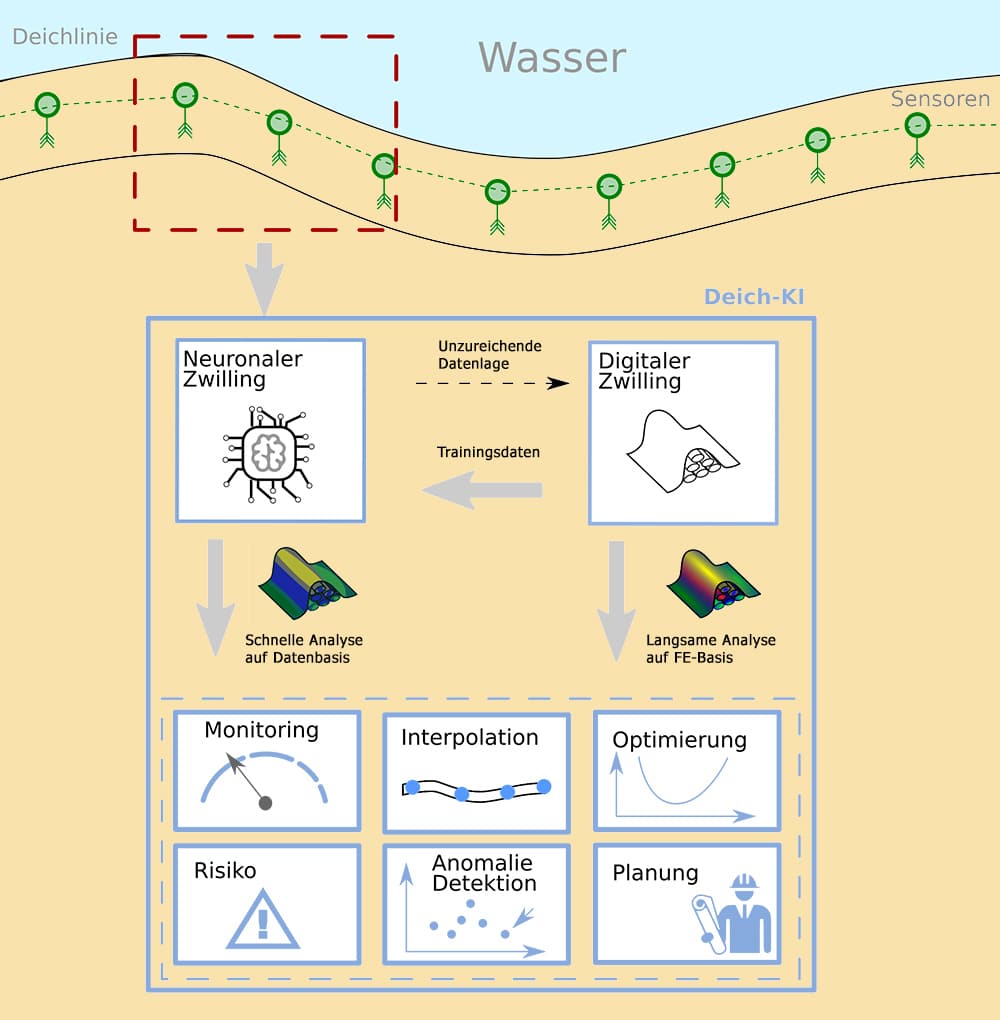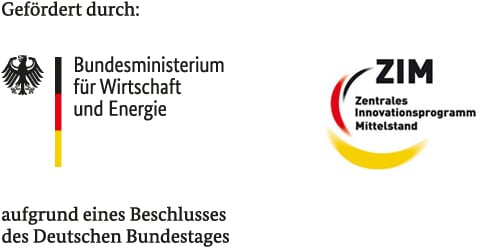SmartDike
- SmartDike
- 01.07.2019 - 31.12.2021
- Federal Ministry for Economic Affairs and Energy
- Central Innovation Program for SMEs (ZIM) - Project form: Cooperation project
- 186.000€
- Prof. Dr. Wilhelm Nüßer
- Matthias Füller, Florian Wortmann
- Ingenierbüro Draier, Gütersloh; Glötzl Gesellschaft für Baumesstechnik, Rheinstetten
Artificial intelligence in the dyke
SmartDike project: Development of an intelligent sensor and risk-based monitoring process for direct integration in the construction of river dykes
Floods repeatedly pose an existential threat to life and property. The most important element of flood protection, in addition to supplementary preventative measures, is technical flood protection. Dike runners are used to monitor dikes. The idea behind the SmartDike project is to integrate intelligent sensor and risk-based monitoring procedures directly into the river dykes during construction. The process is based on soil-filled geotextile tubes that are built directly into the dyke core using a dyke construction machine. Thanks to the dyke monitoring made possible in this way, the respective flood protection centers can check the condition of the river dykes along the entire length of the dyke at any time and thus intervene in a timely and targeted manner. The switch from preventive to predictive maintenance is made possible by a digital dyke twin and offers the opportunity for high cost savings, better field data and detailed application-specific usage data for new business models.

The picture shows the core elements of the project approach. The basis is a detailed simulation of a small section of a dyke using an FEM calculation, for example. This produces very precise data that provides an excellent basis for optimizing and planning the dyke structure and thus represents a true digital twin of this dyke area.
The simulation usually runs for several hours, which is far too long for the situation to be assessed quickly enough in the event of a hazard. In particular, when time is short, as is naturally the case in the event of flooding, it is not possible to calculate the dyke in many places.
For this reason, the digital twin is to be supplemented in the project by an intelligent neural twin that can be trained using the results of the digital twin, among other things, but which then arrives at assessments of the current situation much more quickly. In the event of critical situations that are not yet sufficiently certain, the neural twin can request a new FEM calculation based on the current data. In this way, the strengths of both technologies are combined and enable prompt and reliable assessments of the stability of dykes.
